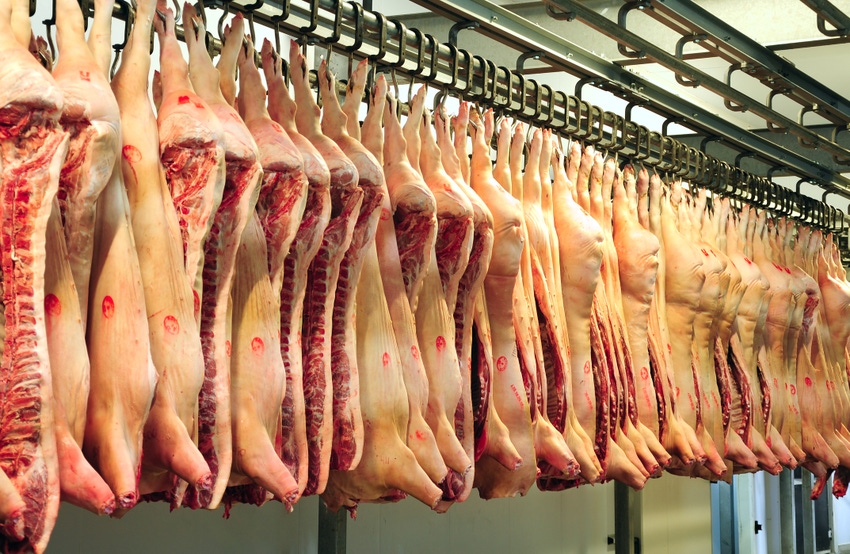A new rule has been introduced that will allow more swine slaughter facilities to participate in HIMP, the HACCP-Based Inspection Models Project.

The U.S. Department of Agriculture’s Food Safety & Inspection Service (FSIS) recently announced it is proposing to amend the federal meat inspection regulations to establish a voluntary inspection system for market hog slaughter that it will call the New Swine Slaughter Inspection System, or NSIS.
It also announced it will be requiring increased pathogen sampling in all swine slaughter establishments.
This move requires publishing a proposed rule in the Federal Register and giving industry 60 days to support the move and the consumer groups the same 60 days to try and defeat the move.
The rule is simply allowing more swine slaughter facilities to participate in HIMP, the HACCP-Based Inspection Models Project.
When this move was announced in another electronic media outlet, one responder said they should call it LIMP for Let Industry Manage their Products.
After the Jack-in-the-Box E. coli O157:H7 outbreak in the mid-90s, one of the many things FSIS and industry did to try and make raw meats safer was to implement HACCP, Hazard Analysis and Critical Control Points, in all meat and poultry plants.
The next step proposed by FSIS was to let plants do their own inspections for quality control and HIMP was launched by a notice in the July 10, 1997, Federal Register.
Over the years the project had about 20 young broiler plants, five young turkey plants and five or so swine plants.
These species were chosen because they are typically composed of young, healthy animals unlikely to be diseased or infected, thus requiring fewer condemnations for health reasons.
However, progress was stopped in its tracks in September 2001 as the American Federation of Government Employees filed an appeal to a district court decision allowing expansion to more facilities. On Friday, Jan. 11, 2002, the U.S. Court of Appeals for the District heard verbal arguments for and against expansion.
The court later agreed with the bargaining unit and expansion beyond the initially planned 30 establishments was prevented until further data could be obtained over time, and the data had to support FSIS’s belief that the new system would enhance food safety along with other consumer benefits.
In a report published by USDA/FSIS, dated November 2014, it appears the five HIMP plants were achieving the goals of FSIS, while employing fewer federal inspectors.
Better with less sounds good to me.
The five HIMP plants, over the years, have been compared to 21 establishments that closely resemble the five.
In HIMP plants, employees of the establishments condemned an average of three carcasses per 1,000, while federal inspectors in the traditional plants condemned an average of 2.7 carcasses per 1,000.
Condemnation for fecal material only occurred at a rate of less than five per 10,000 carcasses in HIMP plants.
Also in HIMP plants, condemnation for food safety issues, such as septicemia and toxemia, were less than three per 100,000 carcasses.
In the traditional plants those federal employees are condemning carcasses primarily for non-food safety issues like broken limbs, bruises and blemishes.
In the HIMP plants, sampling for salmonella was positive only 0.69% of the time compared to 3.0% of the time in the traditional plants.
But maybe most importantly, in the HIMP plants those freed-up inspectors had the time to do over 2,000 off-line verification procedures per plant per year, compared to just under 1,500 in the traditionally inspected plants.
These off-line inspection tasks place inspectors in areas of the production process where they can have more of an impact in guaranteeing a safer product by the tasks they have the extra time to perform.
The New Poultry Inspection System was launched about three years ago, probably because the data from 25 facilities are more robust and statistically significant than that from just five plants.
As expected, lawsuits were again filed to stop this modernization of FSIS that would result in fewer union jobs, but this time both the district and appellate courts upheld HIMP for the birds.
The rumor mill was abuzz two years ago that FSIS was going to announce expanding the HIMP project in young swine slaughter plants, and that led to 60 liberal, mostly urban dwelling, congressional Democrats to send to then USDA Secretary Vilsack a letter stating “It’s too early to expand this regulatory regime.”
They may have slowed the process down a bit, and that was possibly helped by the fact that there was and still is no Undersecretary for Food Safety with the political moxie to make policy changes like is being proposed.
Dr. Elisabeth Hagen set modernization of the inspection system as one of her top goals. She has been gone since December 2013, but must be feeling pleased that someone is still willing to push the envelope and take some heat from some NGOs and the bargaining unit.
FSIS has a budget just north of $1 billion. When this new proposal gets implemented, it can then divert some of those dollars to food safety activities as opposed to quality control to protect a brand name.
Let plant personnel sort for defects, and let FSIS verify the effectiveness and reliability of the establishment’s slaughter process controls.
About the Author(s)
You May Also Like


.png?width=300&auto=webp&quality=80&disable=upscale)
